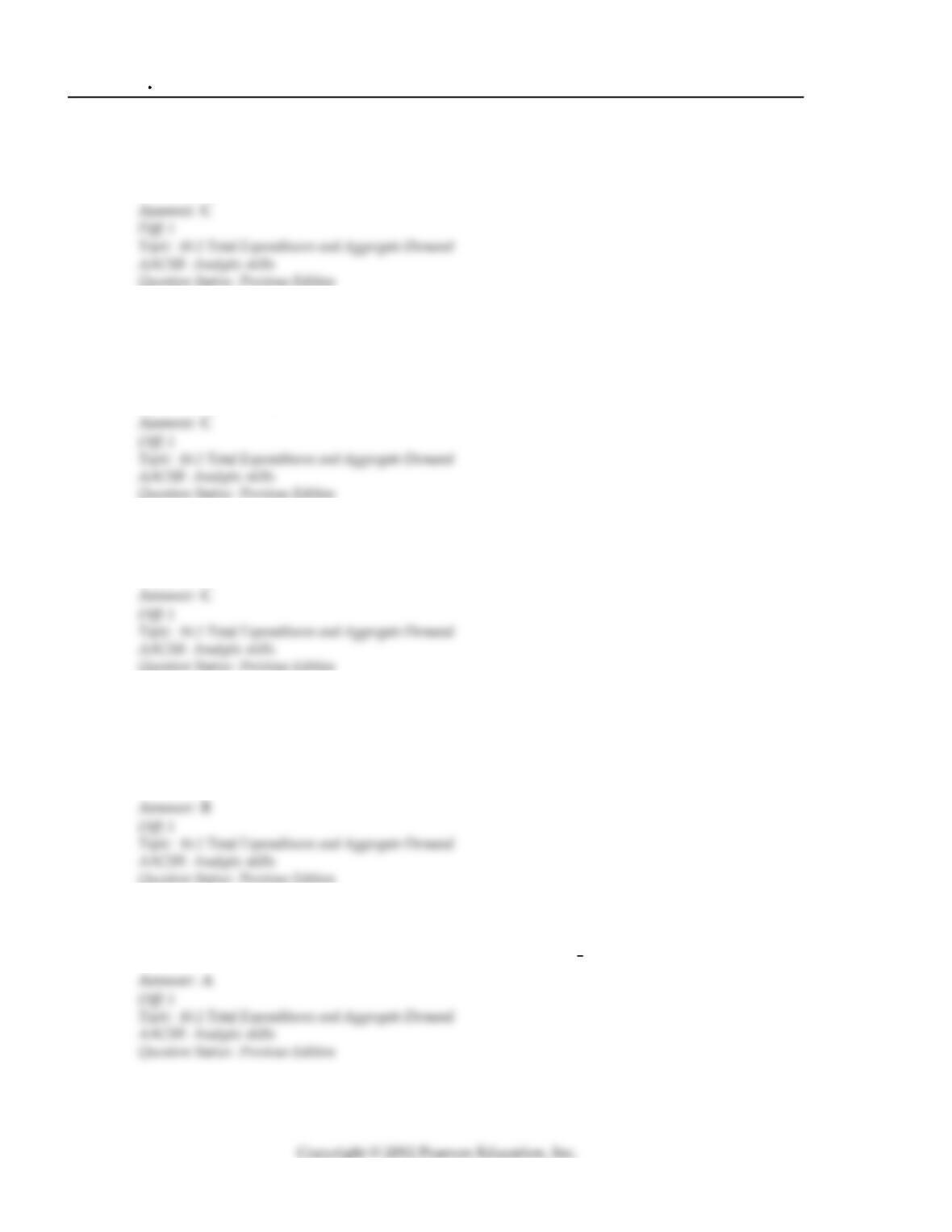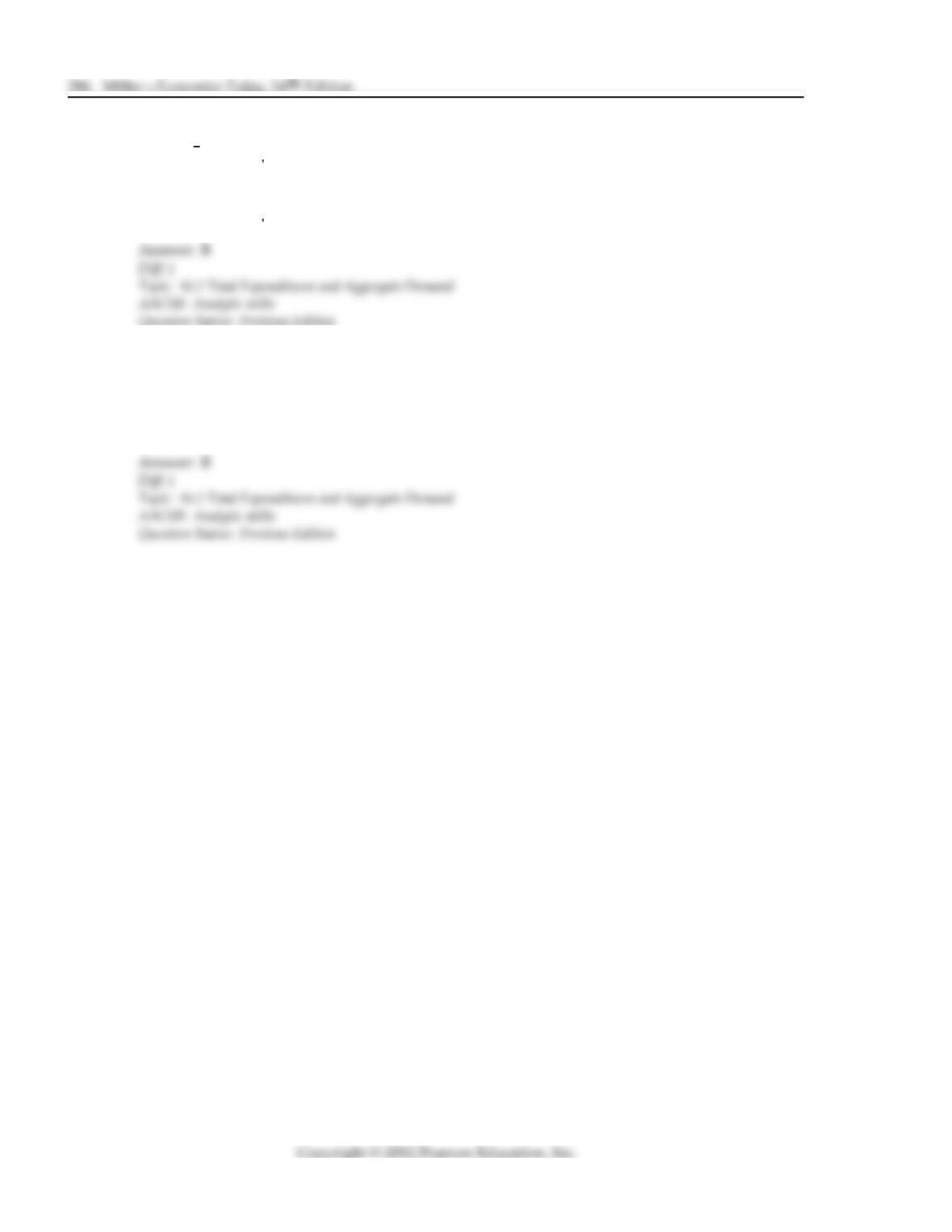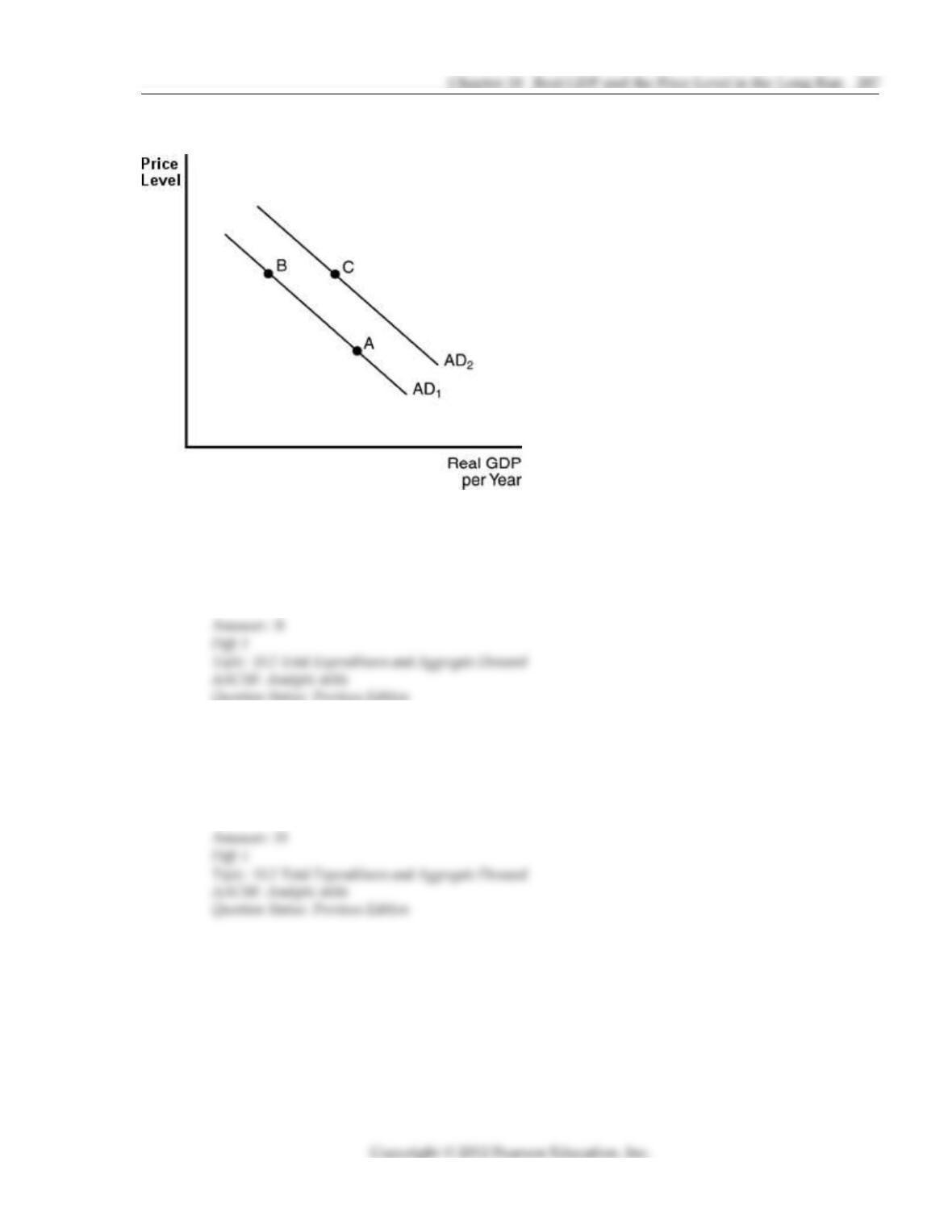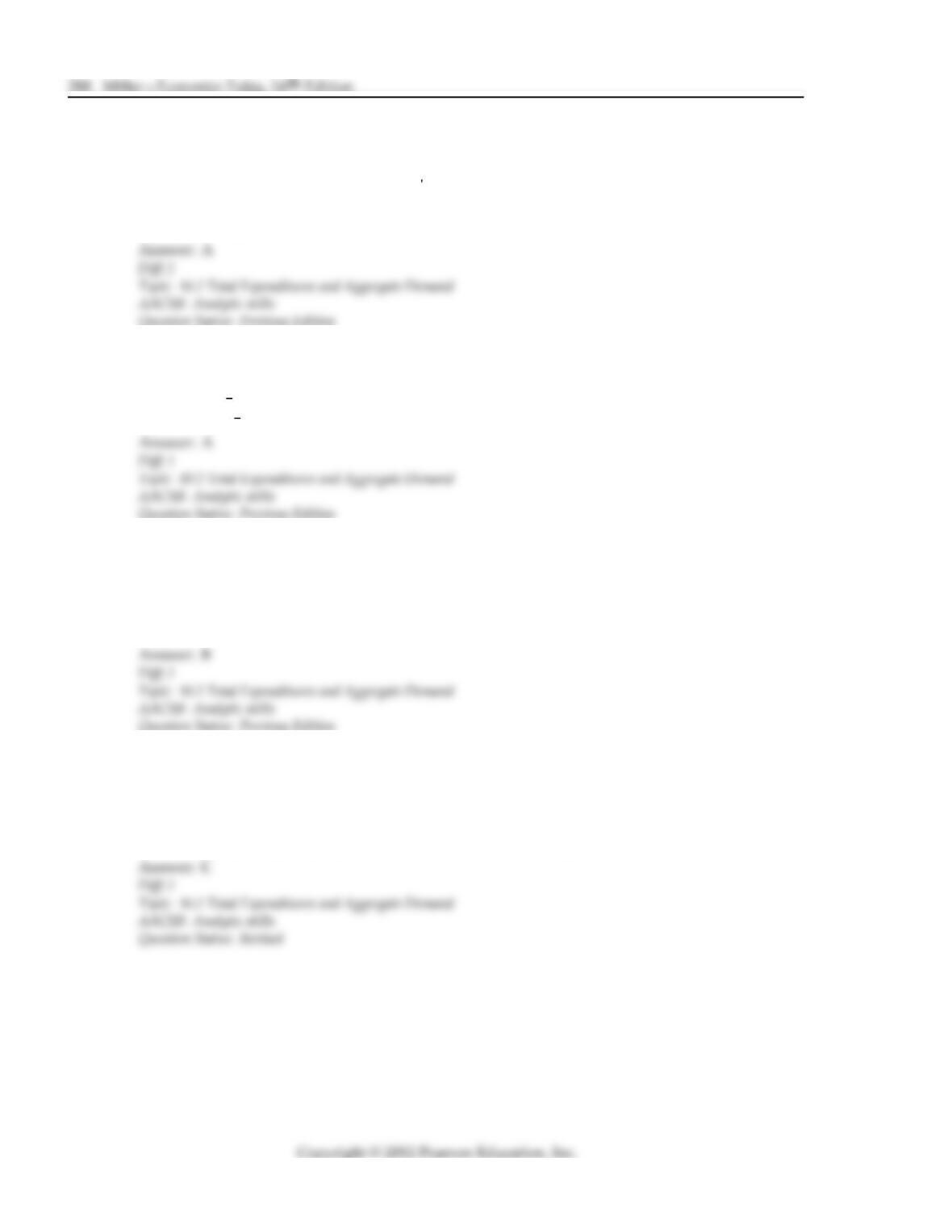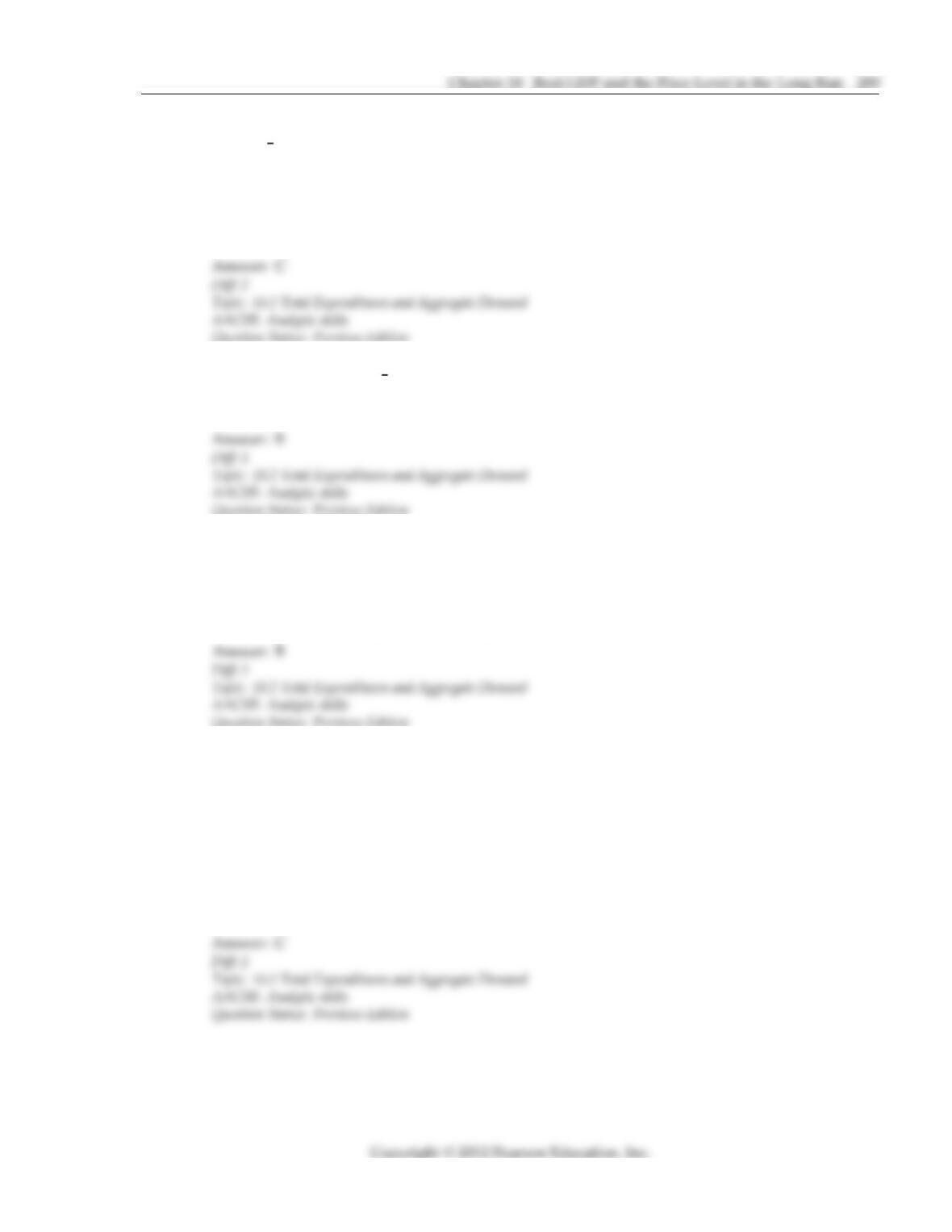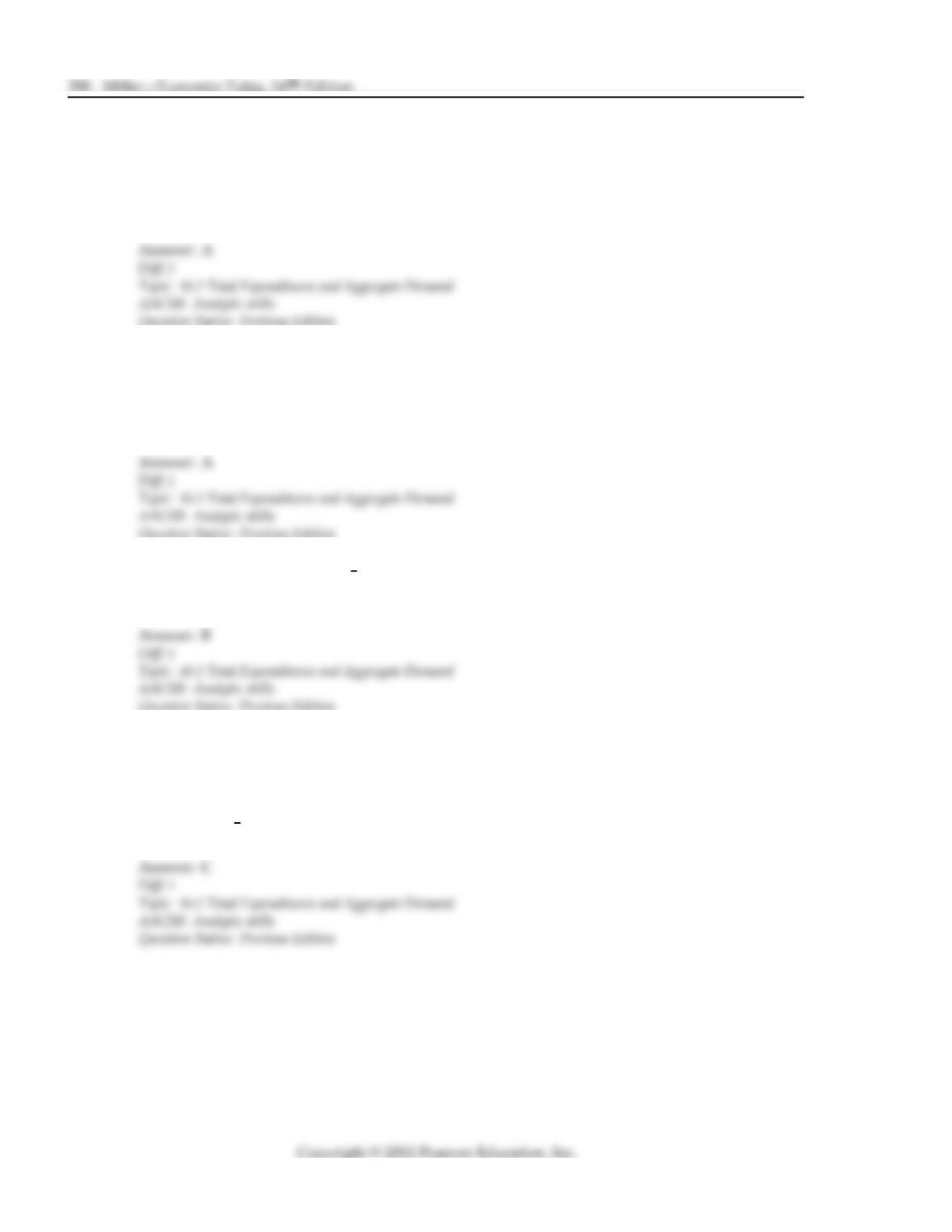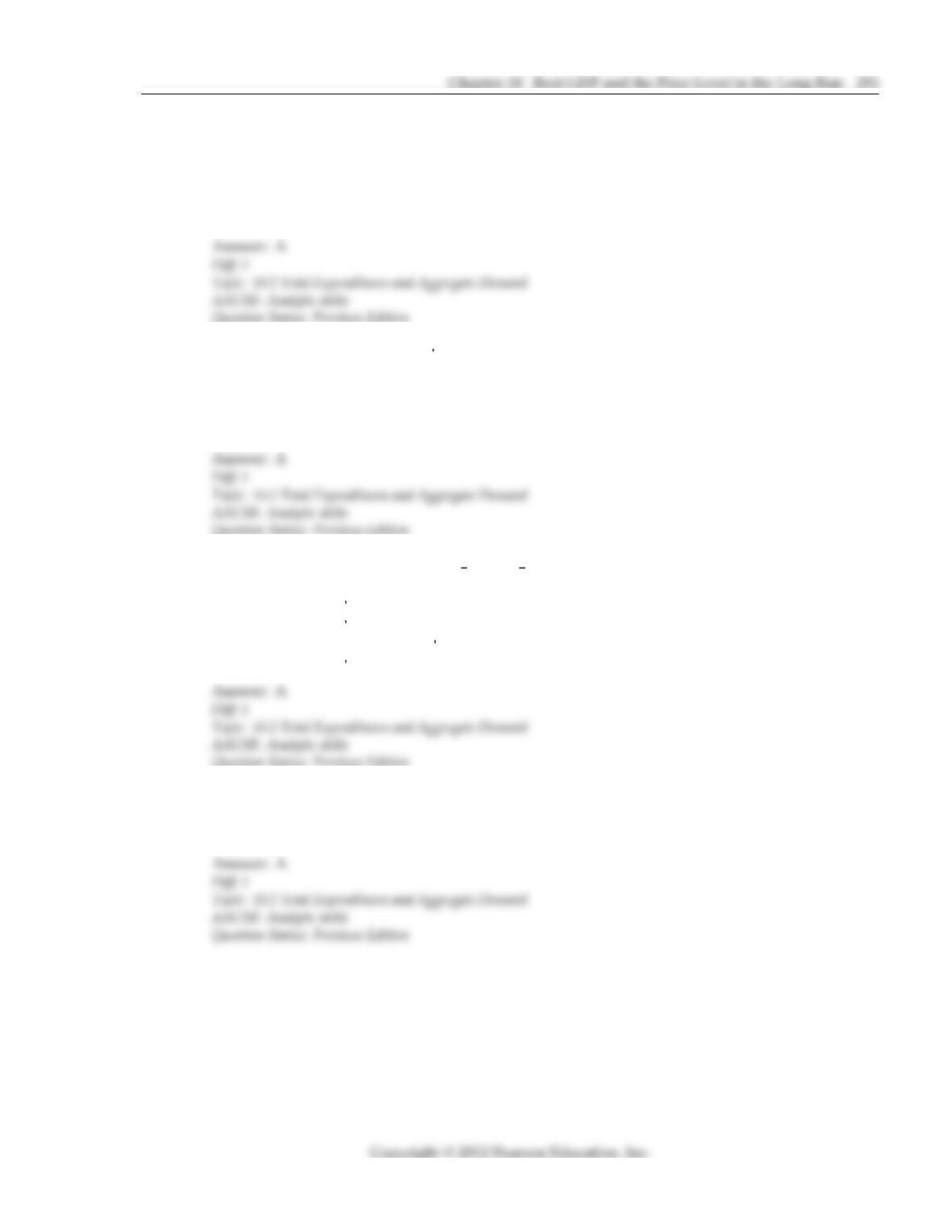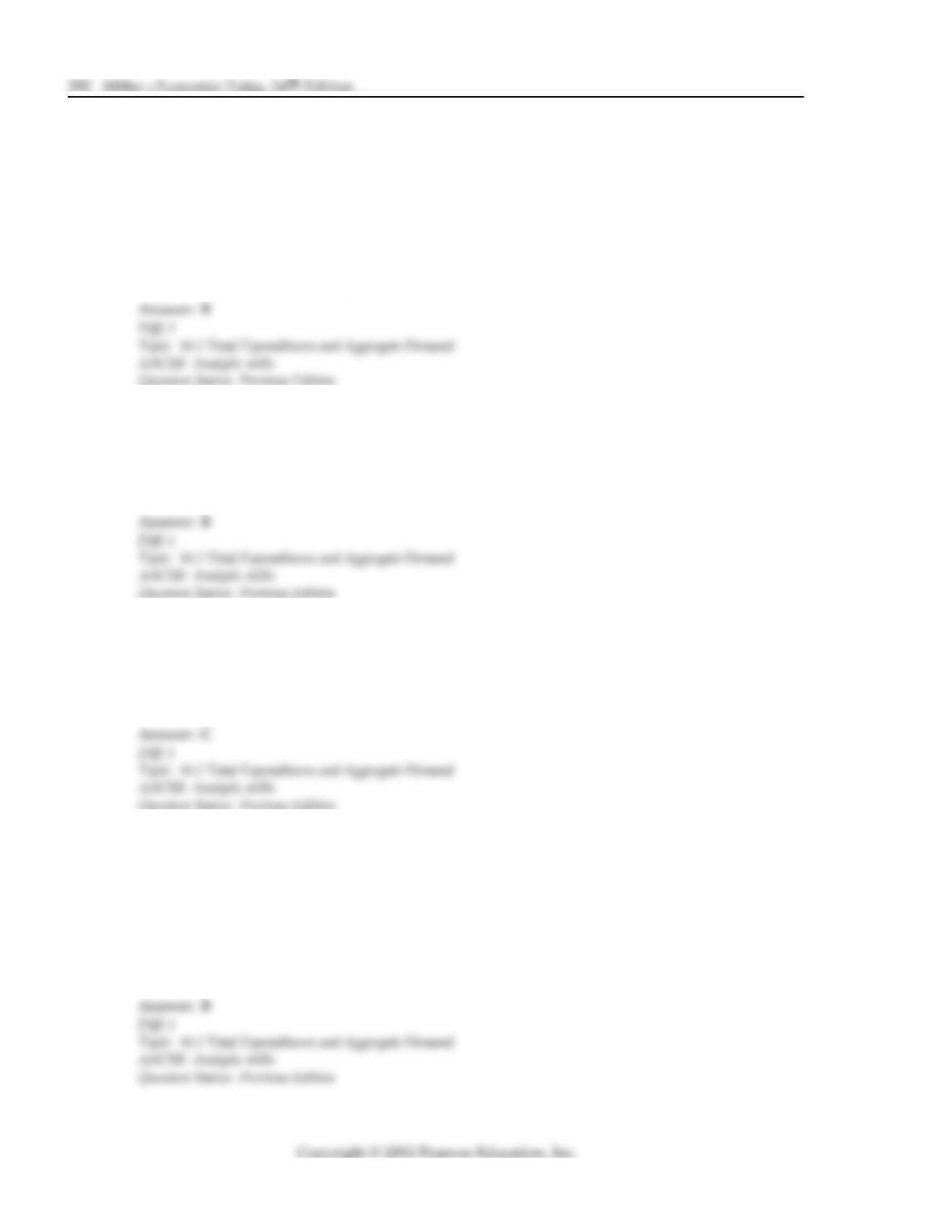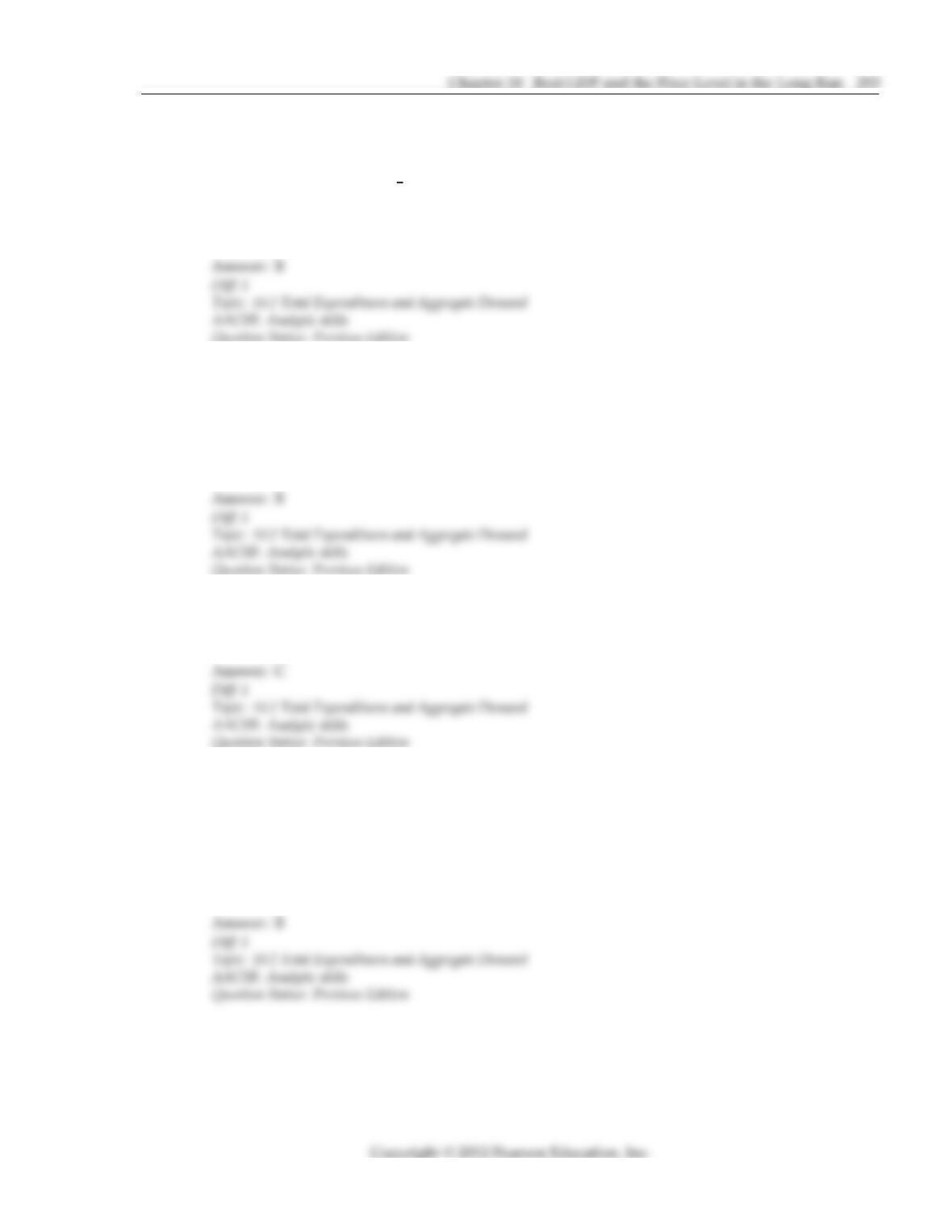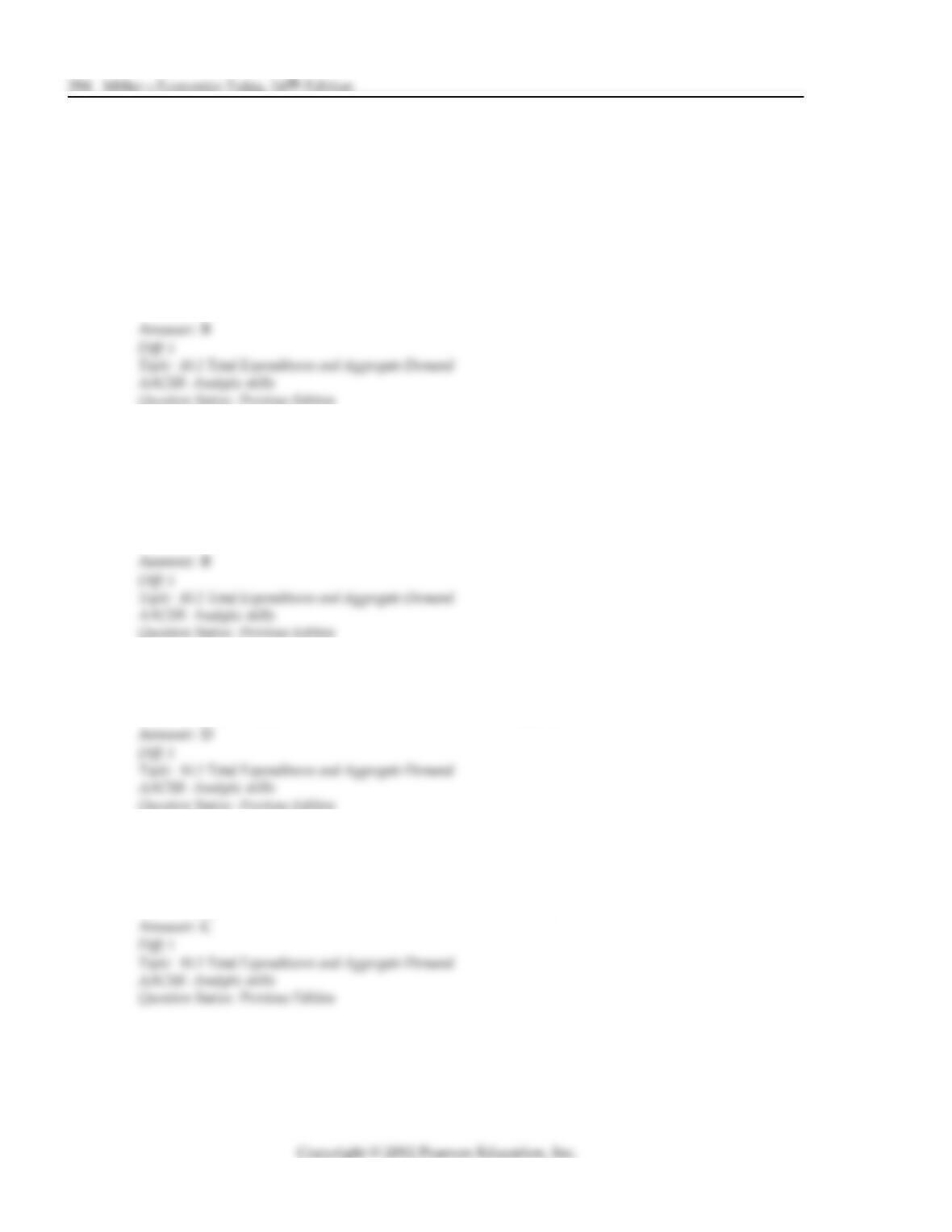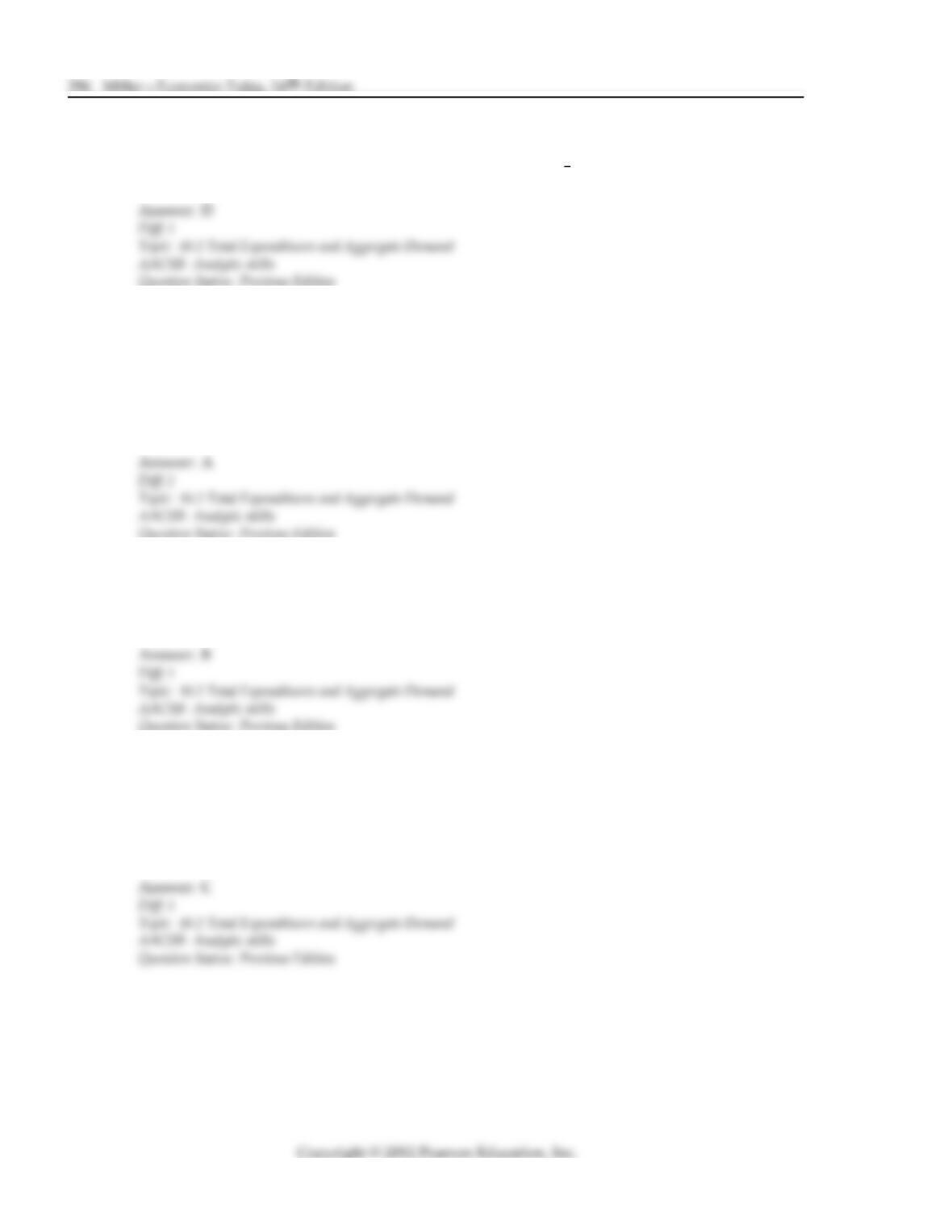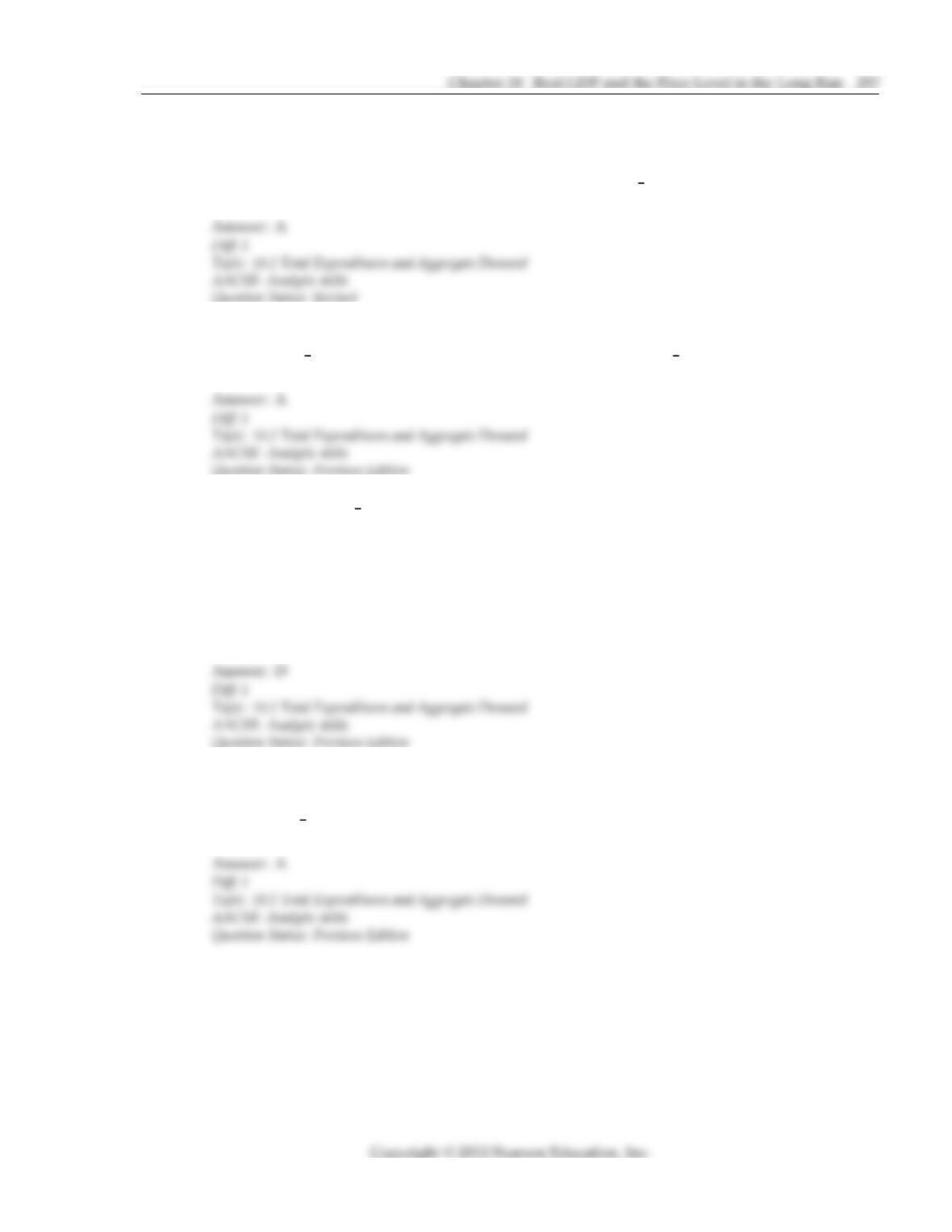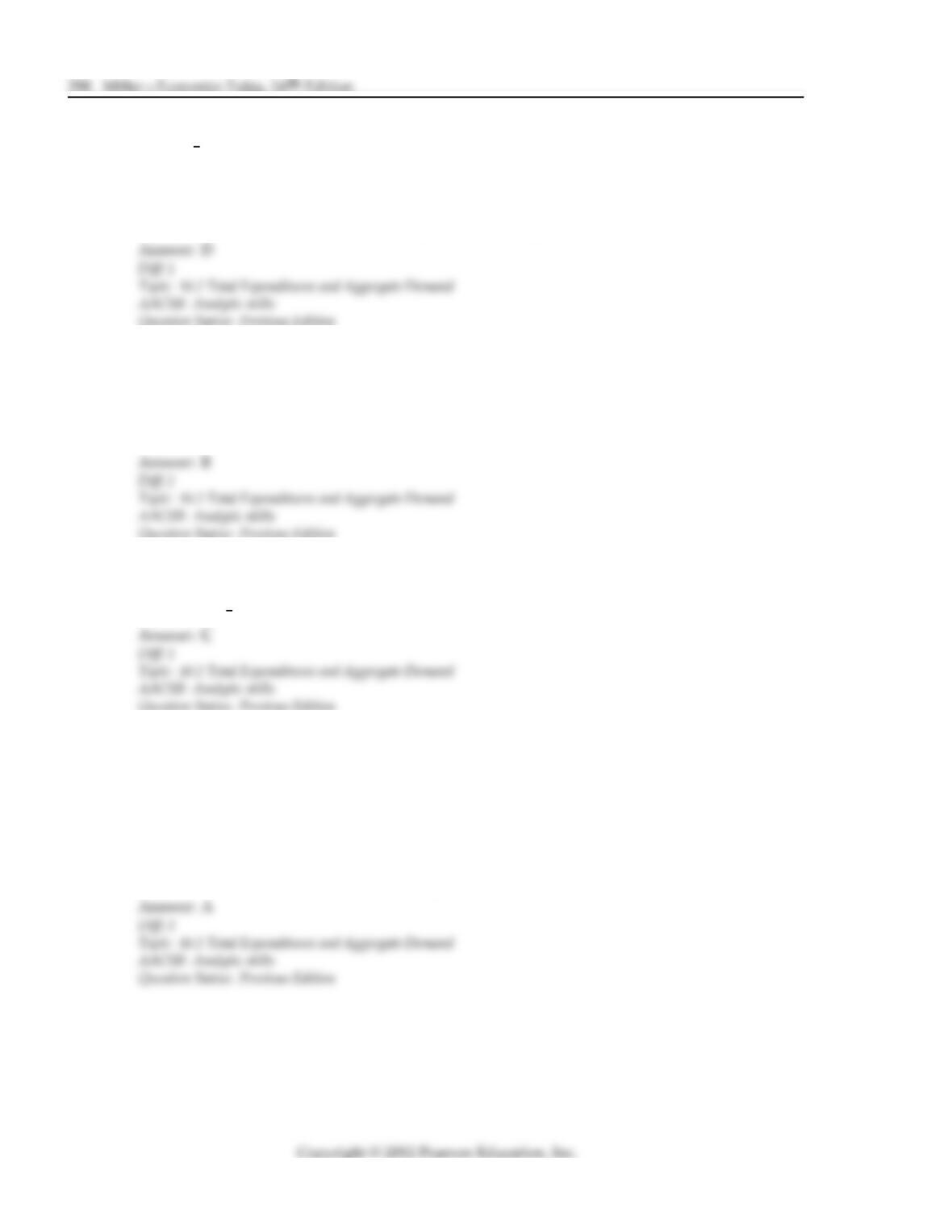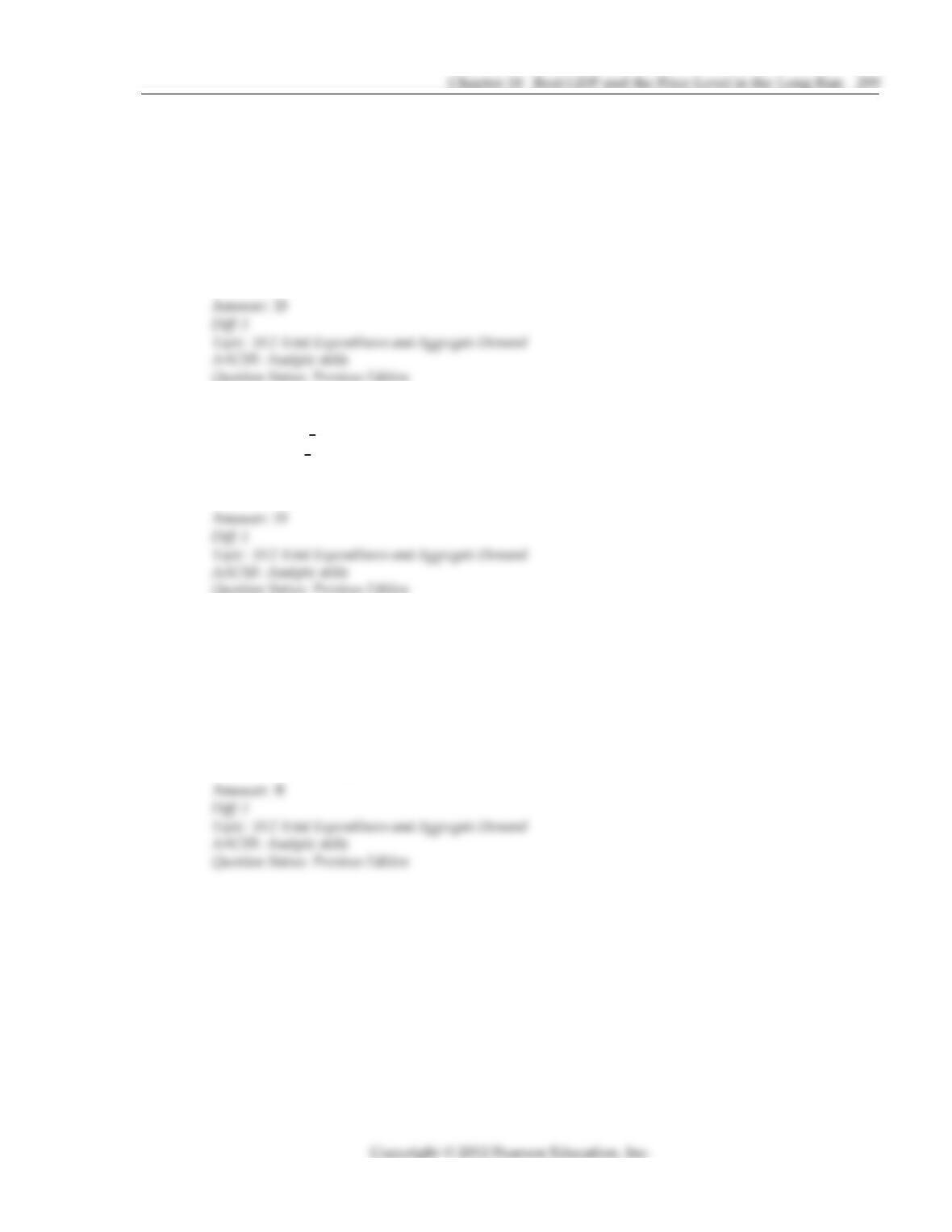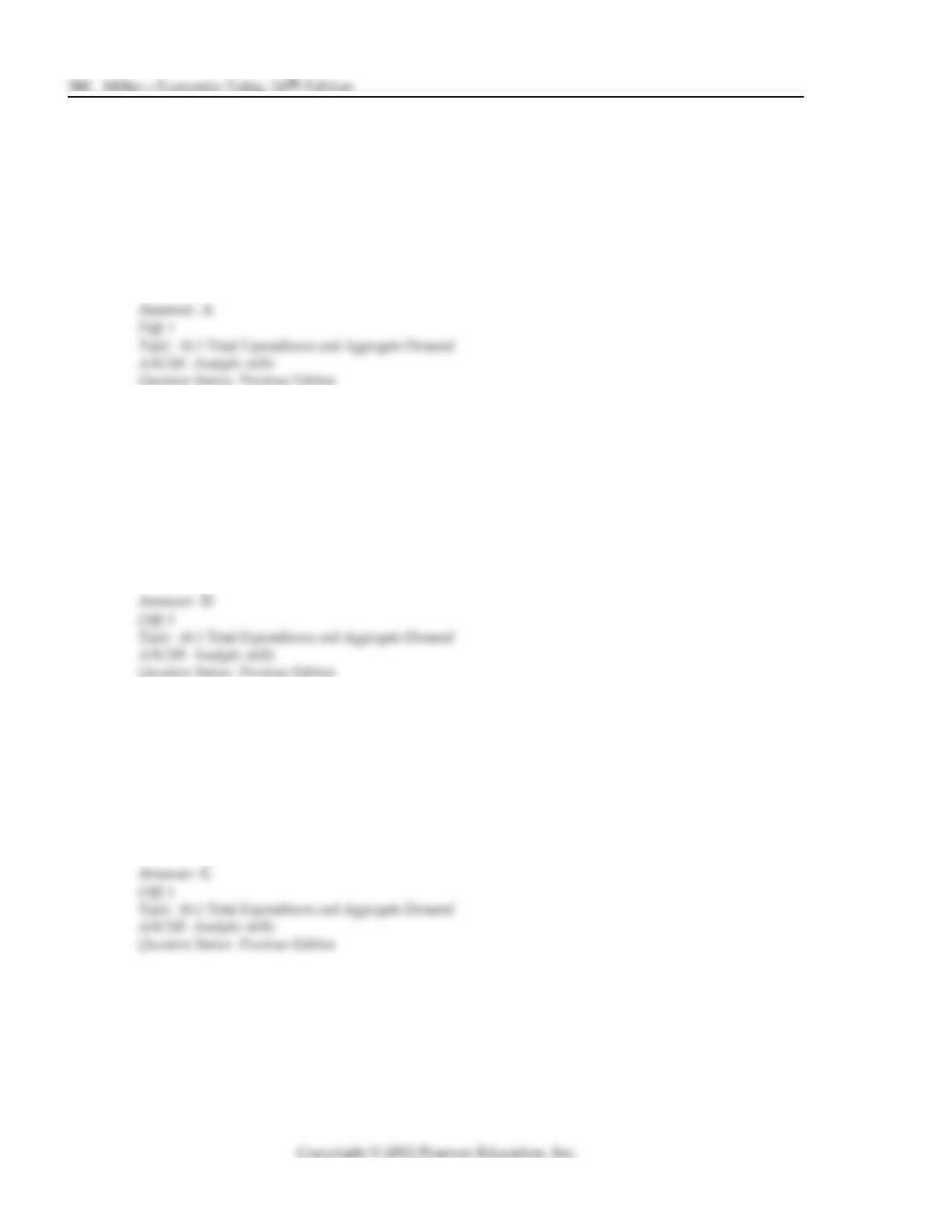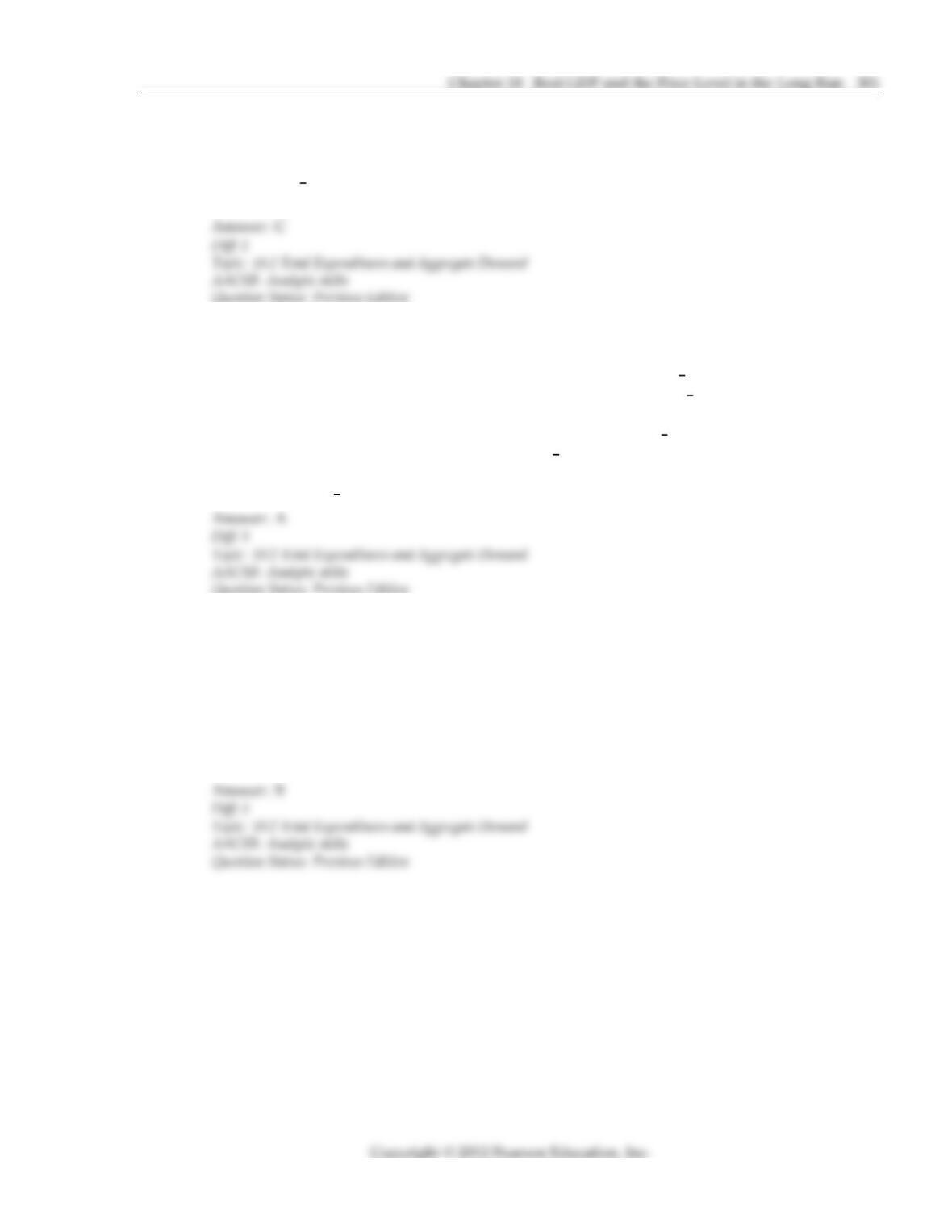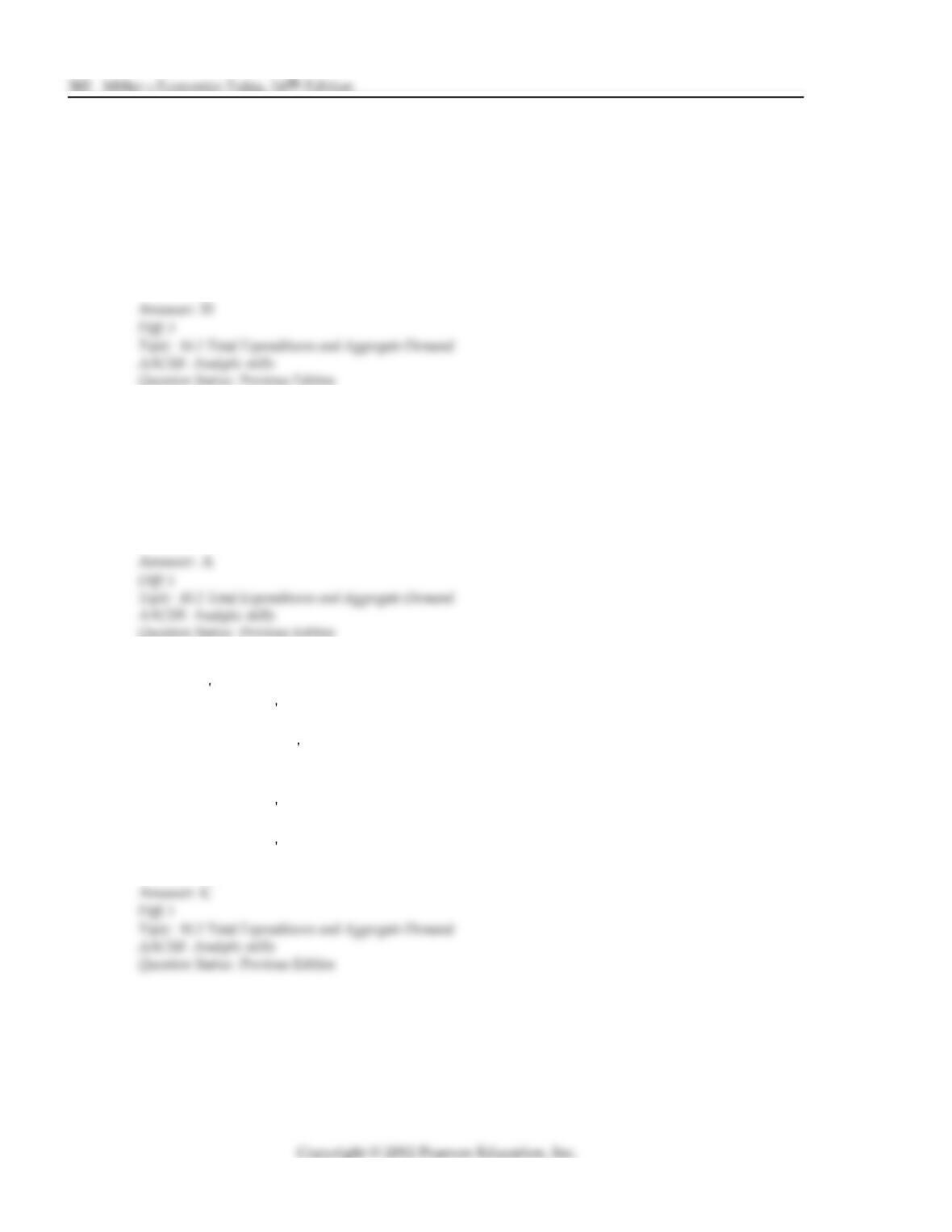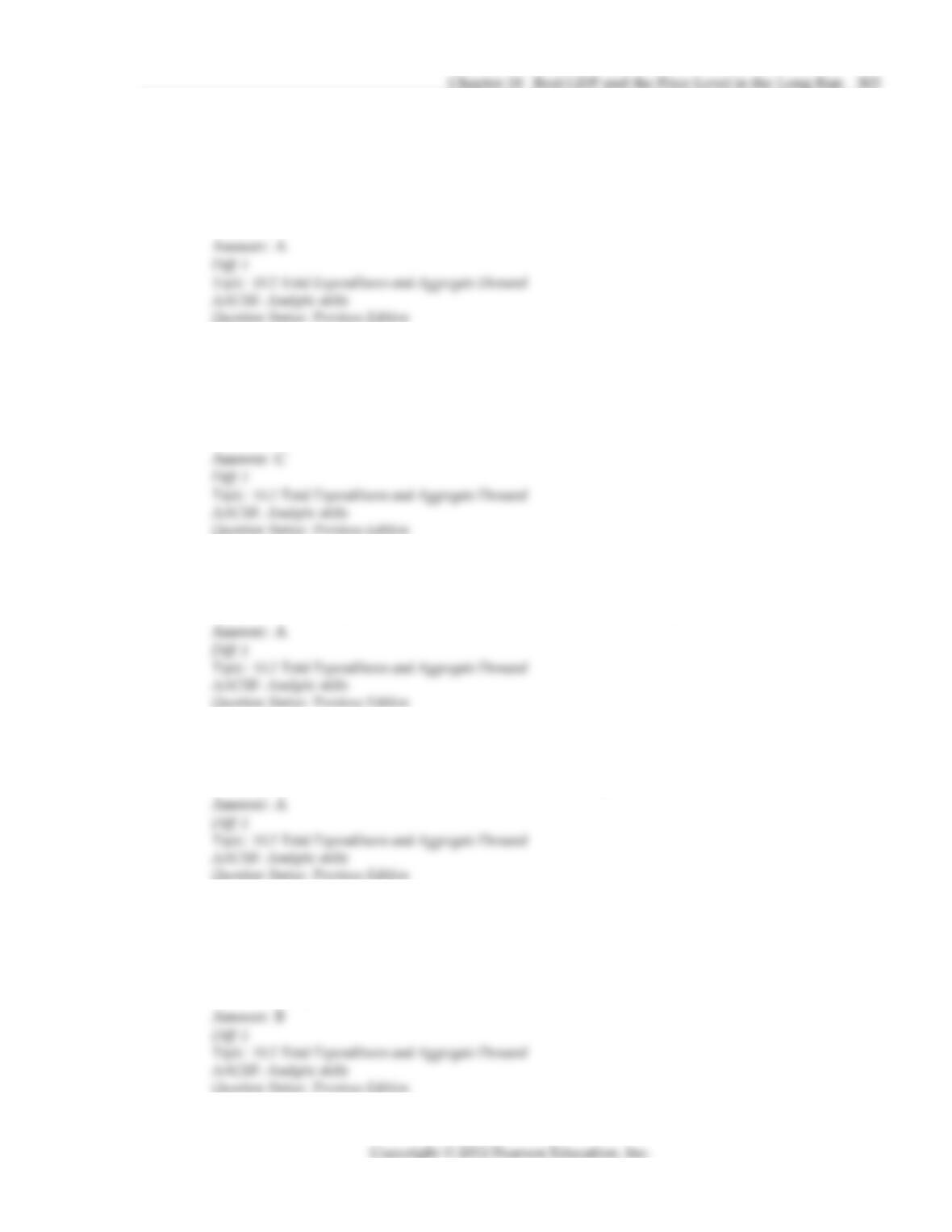12) At each price level, the aggregate demand curve indicates
A) the nominal value of total production of goods and services domestic income that will be
produced.
B) the total amount of real planned expenditures.
C) the nominal Gross Domestic Product (GDP) that will be produced.
D) the total amount of real Gross Domestic Product (GDP) that will be produced.
13) The aggregate demand curve shows that, if other factors are held constant,
A) higher price levels will result in lower total planned spending.
B) higher price levels will result in higher total planned spending.
C) higher price levels will result in lower interest rates.
D) lower price levels will result in inflationary conditions.
14) According to the interest rate effect, an increase in the price level, if other factors are held
constant, will lead to
A) a reduction in total real spending on interest rate sensitive goods.
B) an increase in the stock of real wealth held by the public.
C) an outward shift of the aggregate demand curve.
D) an increase in the real interest rate.
15) The real
alance effect implies that when
A) the price level decreases, the value of money balances held by individuals, firms,
government, and foreigners increases and spending decreases.
B) the price level increases, the value of money balances held by individuals, firms,
government, and foreigners increases and spending increases.
C) the price level increases, the value of money balances held by individuals, firms,
government, and foreigners decreases and spending decreases.
D) the price level decreases, the value of money balances held by individuals, firms,
government, and foreigners decreases and spending decreases.
